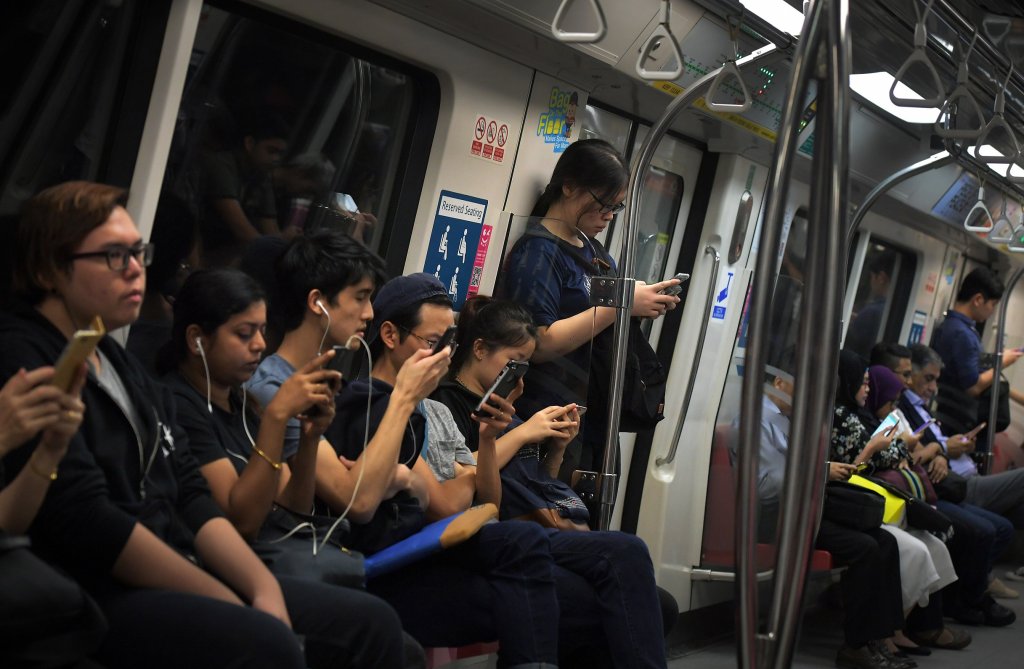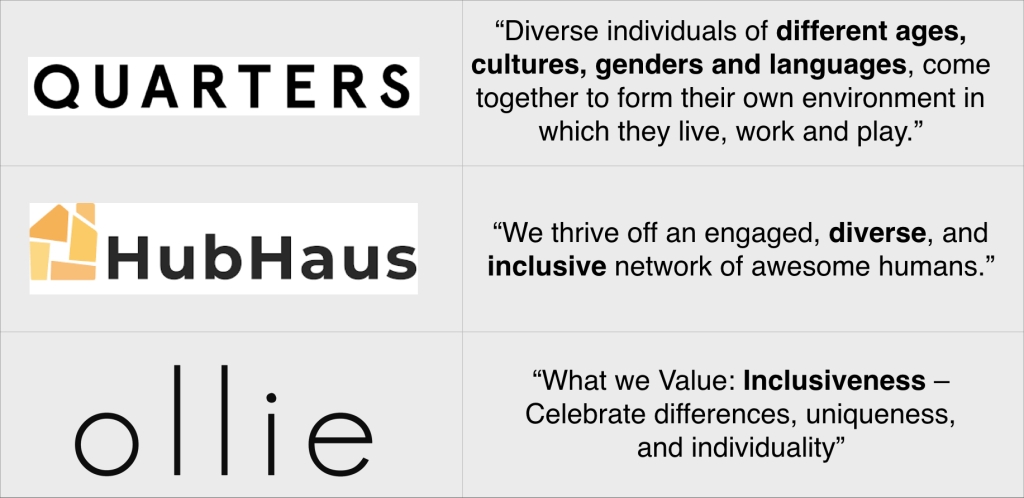We have finally made it to the last part of the Case for Coliving series! Since we had so much to cover in Part 4 we split it into two sub-parts. In this last piece we’ll discuss the impact Coliving can have on the disadvantages of living in today’s modern Network Communities. As you’ll see below, Coliving can certainly decrease the impact of the Network’s disadvantages, but it will not be easy.
A quick recap of what we’ve covered so far:
Part 1 covered Where We Live. We learned about the Big Sort and increasing urbanization. America’s metropolitan areas are growing and because it’s easier than ever for Americans to live where they want, they’re sorting themselves into homogenous communities.
Part 2 covered How We Live. We learned about the old American community called the Township and how it was built on a foundation of strong middle ring relationships. Over the past several decades many American communities have made the transformation to a new type of community called the Network that is based on strong inner and outer ring relationships.
Part 3 covered the Advantages and Disadvantages of living in Networks. Changes to modern living have made our individual lives more comfortable in a variety of ways, but at the expense of isolating us from diverse perspectives and polarizing our communities.
Part 4a covered how Coliving can Magnify Advantages of Modern Living that include more comfortable living, more efficient social movements, and increasing the positive effects of weak ties.
Finally, in Part 4b we’ll examine how Coliving can Decrease the Network’s Disadvantages including political isolation, societal polarization, and curbing creativity. We’ll also discuss how homogenous communities can affect Coliving and review strategies to ensure that Coliving companies create the best possible communities in today’s societies.
How can Coliving be a force to reverse the frightening trends of political isolation and societal polarization? Should Coliving operators be responsible for creating diverse communities despite being more difficult to maintain?
Below we’ll take a closer look at the above questions as well as review the tools that Coliving companies can utilize to create and maintain healthy communities. Hopefully through confronting these difficult topics, the global Coliving movement can intentionally create living solutions that are designed to benefit twenty-first century societies.
Disadvantages of Modern Living
Despite all of the ways that living in a Network Community makes life easier, it also comes with many drawbacks. Smartphones and social media have had massive impacts on the way we live in the twenty-first century and not all of them have been beneficial.
If we showed somebody from the year 2000 what public transportation looks like in any major city today, they would think they were in a Black Mirror episode – everybody with headphones in and heads starting straight down at their phones. No greetings, no interactions, everybody existing in their own world. In my experience traveling across the US and Asia over the past year, this phenomenon is present across all cultures, genders, ages, and backgrounds.

I’m sure you’re familiar with the myriad of problems caused by our screen addiction, but the ones we’re going to talk about today are how new technologies have isolated us in our own custom-made worlds, created homogenous groups that breed polarization, and decreased face-to-face encounters that can lead to creative outputs.
Can Coliving be a force to help reverse some of these negative trends? Let’s find out.
First, we’ll briefly recap each of three disadvantages and why Coliving operators should care about them. Then we’ll discuss the issue that is at the heart of all three disadvantages: homogenous groups. To wrap up we’ll offer some tools Coliving operators can use to combat the negative effects of homogenous groups and the disadvantages of the Network.
Political Isolation
One of the troubling living trends identified by Bill Bishop in The Big Sort is that many Americans in the twenty-first century live in communities where they are only exposed to ideas from a small section of the political spectrum. One of the biggest pieces of evidence supporting this trend can be found in US Presidential voting data that shows over 60% of Americans live in a county where one political party won the 2016 election by 20 percentage points or more.

The fact that American counties are becoming more politically isolated is important for Coliving since the cultural and political environment of a city or neighborhood will affect how Coliving locations are operated.
Resident bonding and community events are two big pieces of Coliving’s value proposition and as such, operators need to customize their offering based on the local context of each location. For example, events hosted in a city where 90% of the population is conservative might be different compared to a city where 90% of the population is liberal.
Since Coliving companies exist in communities where residents are more likely to be politically isolated, their own resident populations are therefore more likely to be homogenous in regard to political beliefs. We’ll discuss the issues with homogenous groups in a later section, but first we’ll tackle another disadvantage that political isolation causes: societal polarization.
Societal Polarization
The main danger of like-minded groups lies in a psychological phenomenon called Group Polarization. Very much related to group think and mob mentality, group polarization describes the tendency for groups of like-minded groups to “adopt attitudes or actions that are more extreme than the initial attitude or actions of the individual group members.”
As Bishop eloquently sums up in The Big Sort, “mixed company moderates; like-minded company polarizes. Heterogeneous communities restrain group excesses; homogeneous communities march toward the extremes.” Only interacting with like-minded company and only consuming media we agree with leads to people existing in echo chambers where ideas become more extreme.
While there are many forces that have increased the political divide in the United States today, we have shown in earlier parts of this series that changes to Where We Live and How We Live have significantly contributed to political polarization.
I believe Coliving companies can run successful locations without considering larger societal issues such as how our living environments cause societal polarization. As a living solution for the twenty-first century, however, I personally believe that Coliving operators have a responsibility to create living environments that will combat societal problems or at the very least not perpetuate them.
How can Coliving companies actively combat societal polarization? We’ll discuss some possible solutions below after addressing the last disadvantage – how homogenous groups can decrease creativity.
Curbing Creativity
Many studies have investigated the process of innovation and documented how an environment can increase creative outputs, perhaps none more famous than Jane Jacobs’ book The Economy of Cities. In her research Jacobs discovered that “the sorts of interactions that incubate new ideas are suffused through chance encounters of a well-functioning neighborhood.”
The concept of “a well-functioning neighborhood” is exactly what Coliving companies are trying to produce in their internal communities. It is worth noting, however, that Jacobs’ definition of a well-functioning neighborhood includes the necessity of interactions amongst individuals with diverse perspectives.
So by Jacobs’ definition, in order to produce an environment that mimics the behavior of “a well-functioning neighborhood,” Coliving companies need to maintain a resident population with diverse perspectives. If not, Coliving communities will fall victim to the negative effects of group polarization as well as struggle to come up with creative outputs due to sameness of perspective.
So all three disadvantages we have discussed can trace their way back to the dangers of homogenous groups. That leads us to one of the most important issues for Coliving companies to consider: the makeup of their resident populations.
Below we’ll address the current makeup of Coliving populations, the forces incentivizing homogenous communities, and strategies Coliving companies can use to create communities that match their values.
Homogenous Groups
People often ask me: who is Coliving for? Typically I respond something along the lines of “Coliving is for everybody – any age, any race, any background!” You’ll notice that Coliving companies echo the exact same language on their websites:
But is that truly what Coliving resident populations look like? Do Coliving locations host an equal number of 25 and 50 year olds? Do the residents hold political beliefs across the spectrum? Do they come from diverse socio-economic backgrounds and work in a variety of industries?
Current Coliving Populations
While it makes sense that not many Coliving companies publish data on the demographics of their residents, from visiting Coliving locations around the world it’s fairly easy to understand that the industry is currently catering to a specific target audience: millennials.
To be clear I’m not saying that Coliving only works for millennials (in fact I think the exact opposite), but I am saying that millennials are the low hanging fruit that current Coliving operators are catering towards. From a business perspective this strategy is obvious: create a product for those that want it the most and will pay the most for it.
So which millennials is Coliving catering to? Ones living in cities with high rents that have an above average willingness to pay – also known as young professionals. For Coliving in the US, that audience looks like college educated, middle to upper class 22–35 year olds who more likely than not lean toward the left end of the political spectrum.
I don’t have the hard data to back up the previous sentence, but from visiting locations and interviewing dozens of Coliving employees and residents, it seems to be the case. In fact, many Coliving companies use the phrase “living in a like-minded community” in order to attract tenants.

Above we discussed the numerous negative effects homogenous or “like-minded” communities can have at a societal level. So is Coliving perpetuating these problems? If so, should Coliving companies even care?
External Incentives for Homogenous Communities
If living in homogenous groups leads to higher levels of customer satisfaction and higher retention rates, then Coliving companies face an economic incentive to NOT create diverse communities. Just as David Roozen discovered that “niche” churches grow faster than those catering to a broader audience (see Part 1 for full discussion), I would guess the same is true for Coliving.
With this in mind, I believe trying to reconcile the below two statements is one of the most fundamental dilemmas faced by the Coliving industry that needs more attention:
- Coliving companies want to promote diverse, inclusive communities
- Research shows that homogenous communities are more comfortable for individuals and grow faster
This will be an extremely difficult paradox for the Coliving industry to come to terms with and I don’t have the answer for how to solve it. On the one hand, I want the Coliving industry to grow as fast as possible to positively affect the lives of as many people as possible. On the other hand, if growing fast means creating homogenous communities and throwing diversity to the curb, then perhaps slow, purposeful growth is better.
I believe most Coliving companies would argue they foster very diverse and inclusive communities and I know for a fact that some actually do. But I would urge Coliving operators, and indeed the entire global industry, to seriously have a look at the demographics of their residents and identify if the makeup of their community is truly aligned with the values and vision of the company.
In summary, there are economic and social forces at play that will push Coliving companies towards creating homogenous communities. Despite these forces Coliving companies are currently using a variety of strategies to purposefully craft their communities and if used correctly, the strategies can help create the diverse and inclusive community desired.
Community Crafting
For the Coliving industry, the significance of community crafting – which for this article we will define as “deciding who is allowed to join your community and who is not allowed to join” – cannot be understated. The importance is completely due to the fact that for Coliving companies, your customers are also a core part of your service offering.

For the vast majority of other industries in the world, this is not the case. Apple has nearly complete control of what their end products look like and so do McDonalds, Tesla, and Johnson & Johnson. Even for new sharing economy titans like AirBnb and Uber, the companies have control over their platform and more importantly, their customers are not a core part of their service offering.
Community crafting is fairly similar to hiring an employee – it’s one of the most difficult and most important things for a business to do and typically must be done in a short time frame with imperfect information. The process is so difficult that most companies can’t do it well and many simply outsource it. Now imagine a business that must go through that process for their own employees AND their own customers – that’s Coliving.
So how can Coliving companies ensure they get the right customers in order to craft the right community? I’ve talked with dozens of Coliving companies across the world (and researched many, many more) and I haven’t found one yet that has 100% cracked the code on Community Crafting, but it doesn’t mean they’re not trying.
Brand Marketing
The first strategy to crafting the right Coliving community is using brand marketing to ensure that potential residents know exactly what to expect out of your living product. Companies will save loads of time and resources if the only people to apply to live at their locations are already ‘good culture fits.’
Currently companies use their website, social media accounts, and word-of-mouth marketing to construct their desired brand image. While I believe most Coliving companies have done a great job projecting their values in their digital brand presence, there’s an important balancing act amongst Coliving’s unique selling points.
While many potential residents apply to live in Coliving locations for the community aspect, others place more value on the ease of moving, flexible lease terms, or affordability. With this in mind, companies need to balance how they project the advantages of Coliving so they don’t promise a vibrant community and end up with 90% of their residents only living there for the affordable rent.
Companies also need to consider whom they plan to reach with their marketing. Modern digital marketing allows targeting super specific groups like “22-30 year old male college grads living in Brooklyn” if that’s the group you want more applications from. Regardless of your thoughts on data privacy, targeted digital advertising can be a very powerful tool for Coliving providers to ensure a diverse community.
Resident Selection Process
Once Coliving companies have educated potential applicants on what to expect from your brand, the next crucial piece of the community-crafting puzzle is the resident selection process. While the industry seems to have a handle on brand marketing, the resident selection process is a big area for improvement.
At a bare minimum the selection process consists of a largely informational written application, an in-person or digital interview, as well as a tour of the home/apartment. Some of the more involved selection processes include the potential resident meeting all future roommates (and being approved or denied) or taking a Myers-Briggs type personality test.

While the entire application process can vary significantly across operators, almost all companies I spoke with mentioned that if the process works and translates to good roommate pairings, it results in more engaged residents that are more likely to renew their lease. But Coliving operators hoping to maintain a great resident selection process face another dilemma:
- Spend lots of time and resources to maintain a manual, customized resident selection process with high success rates
- Automate the process through technology to cut costs and achieve scalability, but likely with lower success rates
Many operators claim to be using (or plan to use) machine learning to scale their resident selection process. While I’m confident machine learning can play a role in improving the resident selection and roommate pairing processes, in such a subjective process as deciding if a person will be a good fit for a living community, I don’t believe we’re at a point where it can be fully automated.
Regardless of an operator’s selection process, the procedures in place should be created and updated according to the company’s desired community makeup. If used correctly the resident selection process can be the most effective means to ensure Coliving communities are well crafted.
Onboarding Process
Lastly, the resident onboarding process can act as a powerful tool to get ‘full buy-in’ from each resident as to the company’s values and what is expected of them as a member of the community. Most Coliving operators I have seen in the industry today have a very limited onboarding process despite it being another legitimate strategy to craft the company’s desired community.

Similar to the trade-off with the resident selection process, there also exists a trade-off between an extensive onboarding process and profits. One of my good friends in the industry, Gui Perdrix, wrote an article titled What’s the ROI of community in coliving? that gives a great perspective on this particular trade-off.
I truly think companies that simply hand over the keys and a calendar of events are missing out on a crucial opportunity to build trust with their residents that can yield a variety of benefits in the long run. Perhaps one of my next articles will cover my full thoughts on the immense potential of a meaningful onboarding process for Coliving companies.
In summary, finding the right people to form a successful Coliving community is extremely difficult. The strategies Coliving operators can and should utilize include intentional brand marketing, a robust resident selection process, and an onboarding process in line with the company’s values. Coliving companies that can effectively harness the power of these tools will avoid the negative effects of homogeneous communities and decrease the disadvantages of modern living.
Looking Forward
We have covered a TON of material in this series, particularly in this last piece. I hope everything we covered – including the history of living trends, current living challenges, and potential future solutions – have encouraged you to think about modern living in a different way.
Us humans have some big problems coming our way this century and it’s about time we think about solving them. I think a great starting point is a return to genuine human connections and re-designing the way we live to better prepare us for the challenges ahead.
After meeting countless Coliving pioneers over the past year I couldn’t be more confident in the ability of the Coliving movement to drastically improve the way we live. Despite the many obstacles ahead for Coliving, from my experience I believe we have the right people and companies leading the way towards exponential growth – it’s only a matter of time before millions of people across the world are experiencing the benefits of Coliving.
Thanks for stopping by Coliving Corner and staying with me through the Case for Coliving. Please feel free to reach out with any thoughts or comments – as you can probably tell I love discussing anything and everything related to Coliving.
Case for Coliving Articles
Part 1: Where We Live
Part 2: How We Live
Part 3: Advantages and Disadvantages of the Network
Part 4a: Coliving – Magnifying Advantages of Modern Living
Part 4b: Coliving – Decreasing the Disadvantages of Modern Living



